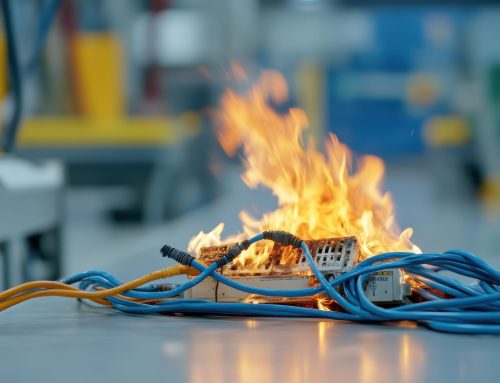Preparation and planning are key in mitigating and possibly reducing the impact of serious disasters like a pandemic. Recent disasters like the Coronavirus pandemic has taught business owners a lot of lessons when it comes to striking a balance between continuity of operations and maintaining the safety of all employees and personnel. Disaster preparedness isn’t always easy, but it’s necessary.
NFPA 1600® can act as a valuable tool for businesses focused on continuity of operations and the many facets that go in to planning for a disaster.

What is NFPA 1600®?
NFPA 1600® Standard on Continuity, Emergency, and Crisis Management is our “national preparedness standard” for emergency preparedness. The standard offers key information for businesses and organizations seeking to conduct effective risk assessment, identify potential business impact, and develop emergency and recovery plans.
The National Commission on Terrorist Attacks Upon the United States (the 9/11 Commission), recognized NFPA 1600® as our National Preparedness Standard®. It is widely used by the public, not-for-profit, nongovernmental, and private entities on a local, regional, international, and global basis. The standard has also been adopted by the U.S. Department of Homeland Security as a voluntary consensus standard for emergency preparedness.
Initial planning steps
If possible, the following steps should be taken prior to a disaster. However; these steps can also be effective in outlining a plan of action in the midst of a crisis as well.
NFPA suggests the following steps for successful disaster planning:
- Identify the crisis for which you’re planning (i.e. the Coronavirus pandemic)
- Conduct a business impact analysis
- Evaluate dependencies, supplies, single point failure, and both potential qualitative and quantitative impacts from disruption
- Assess resource needs
- What do you have in place currently to mitigate potential disruptions?
- What are the things you must do to maintain services, at a minimum?
- What are your technological capabilities and how can they be leveraged to minimize impact?
- What are aspects of your business or services that can be disrupted in order to re-direct assets to necessary activities?
Going through these steps will give you a good overall view of your business’ capabilities and necessary resources to continue operations given a specific disaster.
Emergency Preparedness Checklist
Disaster preparedness for businesses starts with a plan, but organizing what should go in that plan can be tricky. As a resource for businesses and other organizations seeking to plan for disasters, NFPA has also created an Emergency Preparedness Checklist. This checklist simplifies the key aspects of NFPA 1600® and aims to help organizations identify where to place their focus prior to, in the midst of, and even following a disaster.
Every disaster will bring an organization into some kind of “uncharted territory.” Planning as best you can with the information you have is the best way to ensure the least amount of disruption.
This checklist, which is a free resource, takes you through the preliminary stages of program management, planning, risk assessment, and business impact analysis, all the way through to emergency operations/response and program maintenance and improvement. From planning to reflection, every decision made should be communicated to the appropriate personnel and thoroughly “tested” as much as possible depending on the specific disaster for which you’re planning.
Your trusted partner
Fire Systems, Inc. has been in business for over three decades. As a family-owned and operated fire protection company, it is our mission to provide our customers with the best fire protection service. We are your partner through it all. You can trust that Fire Systems will stand by your side to keep you and your facility compliant and safe. Disaster preparedness for businesses can be daunting. The last thing you should be worrying about in the midst of a disaster is the safety of your building. As a full-service fire protection company, we’re here to help. Contact us at 770-333-7979 or visit our website for more information.






